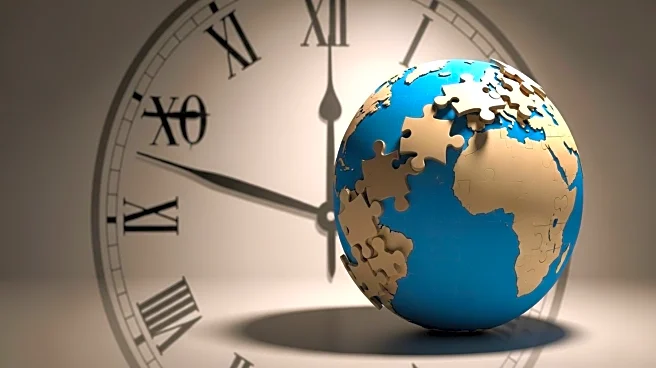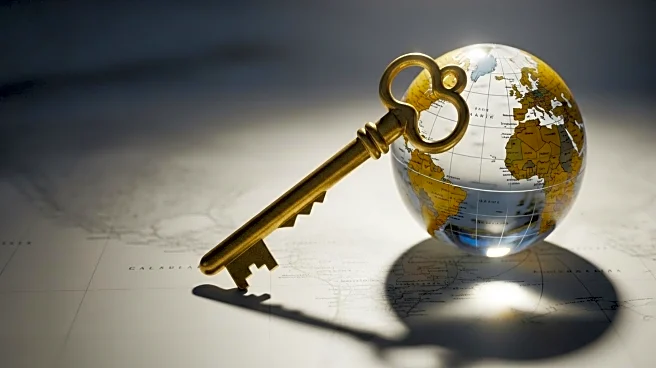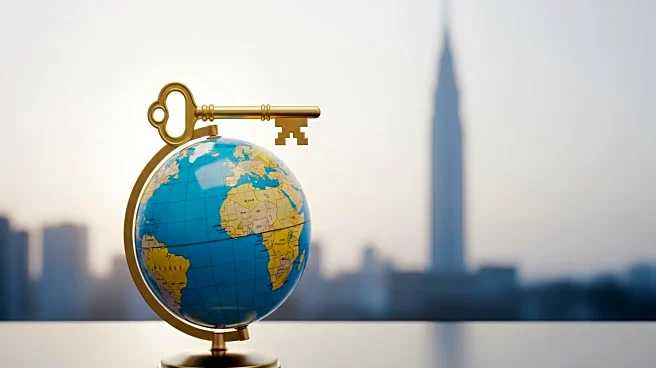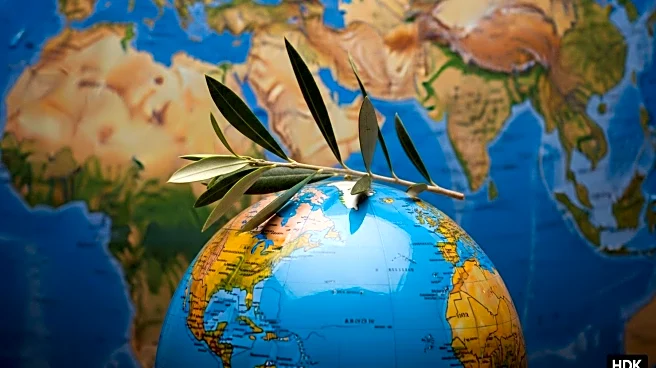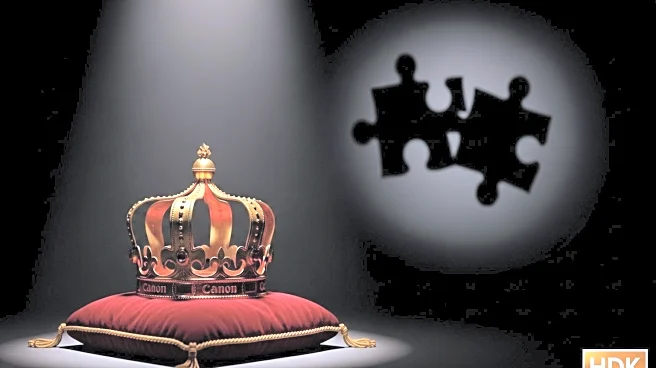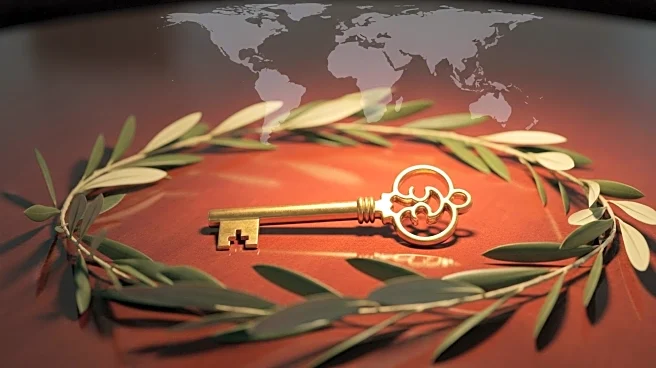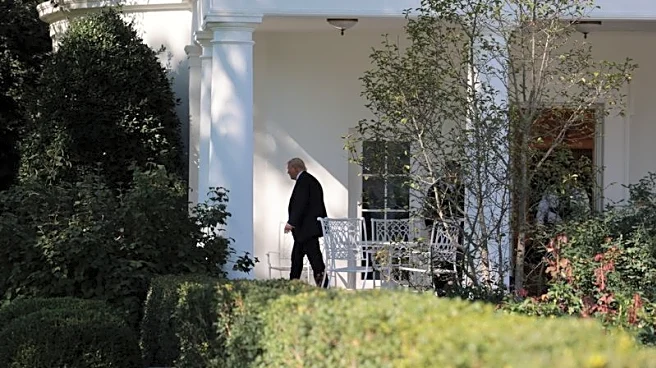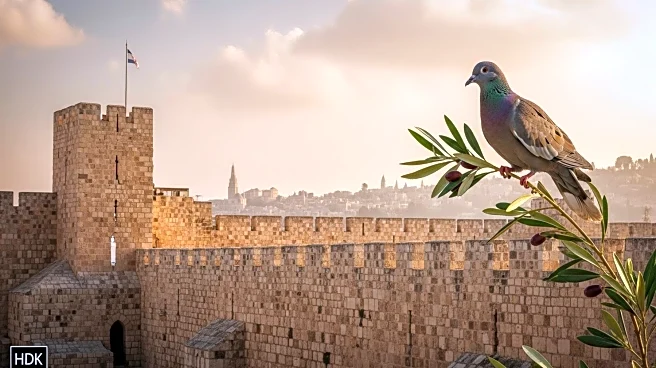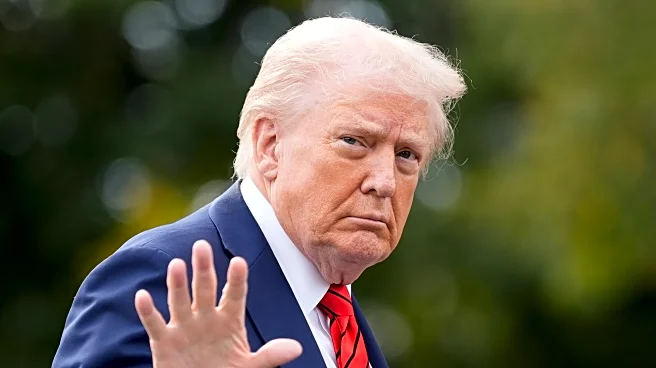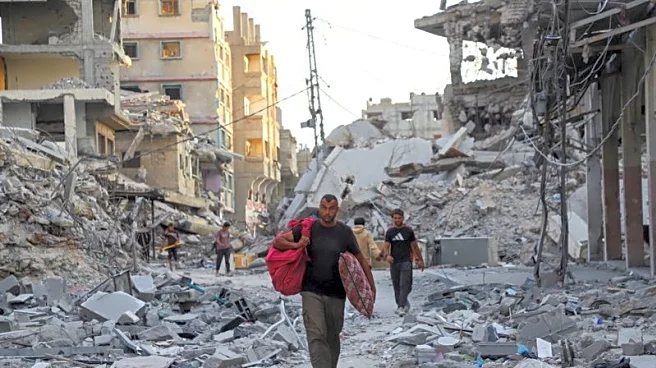What's Happening?
President Trump has expressed dissatisfaction with a Time magazine cover photo that accompanied a feature on his peace-making efforts in the Middle East. The cover, which features Trump with a headline 'His Triumph,' was criticized by Trump on his Truth Social platform as 'the worst of all time.' He noted that the photo was taken from a low angle, which he dislikes, and commented on the appearance of his hair and a small crown-like object above his head. The magazine's feature highlighted the release of Israeli hostages from Gaza under Trump's peace plan, which also involved Israel releasing Palestinian prisoners. The peace deal, signed at a summit in Sharm el-Sheikh, Egypt, has been seen as a potential strategic turning point for the region.
Why It's Important?
The peace deal brokered by President Trump could have significant implications for the Middle East, potentially marking a strategic shift in the region's dynamics. The release of hostages and prisoners is a critical component of the agreement, which aims to stabilize relations between Israel and Hamas. Trump's criticism of the Time magazine cover highlights the ongoing tension between media portrayals and political figures, reflecting broader issues of media influence and public perception. The deal's success or failure could impact U.S. foreign policy and Trump's legacy, especially as it relates to his second term achievements.
What's Next?
The peace agreement's future remains uncertain, with the possibility of unraveling despite initial acceptance by Israel and Hamas. The transitional governance plan for Gaza, involving a technocratic Palestinian committee, will be crucial in maintaining stability and overseeing redevelopment efforts. International stakeholders, including world leaders who attended the summit, may play a role in supporting or critiquing the agreement's implementation. Continued monitoring of the situation by global entities and media will be essential in assessing the deal's impact and longevity.
Beyond the Headlines
The ethical and humanitarian dimensions of the peace deal are significant, given the high death toll and humanitarian crisis in Gaza. The agreement's focus on prisoner release and governance restructuring highlights the complex interplay of justice, reconciliation, and political strategy. The media's portrayal of such events can influence public opinion and diplomatic relations, underscoring the importance of balanced reporting and the potential for media bias in shaping narratives.
